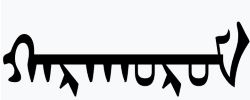Karakorum
Karakorum became the Imperial Capital of the Mongol Empire after the death of Genghis Khan in 1227AD.
Though Genghis Khan designated the site as the empire's capital as early as 1220, it was Ogedei Khan, Genghis' third-eldest son, and his successor, who ordered the building of Karakorum in 1235 after the defeat of the Jin Empire. Walls and a palace were constructed, which before had been merely a ger settlement. Construction was completed in one year.
Dubbed "Tumen Amgalong Ord" or, Palace of Myriad Peace, one of Genghis Khan's ministers recited the following poem at the ridge raising ceremony:
Karakorum soon rose in stature into a major site of world politics. The palace was enlarged and the stupa temple completed during Mongke Khan's rule. The enslaved Parisian goldsmith, Guillame Bouchier, fashioned a gigantic, automated tree of silver and other precious metals, where it was displayed in the palace courtyard. The branches extended into the palace rooms. Silver fruit hung from the limbs and the trunk was entwined with golden serpents.
When the khan wished to provide ayrag, the preferred Mongol alcoholic beverage, for his guests, a trumpeting mechanical angel placed at the top of the tree blew on its horn. At that signal, the serpents gushed the ayrag from their mouths into a large basin at the base of the tree.
In 1254 AD, Flemish Franciscan William of Rubrick, missionary and papal envoy to the Mongolian Empire, reached Karakorum. He wrote detailed, not always flattering, accounts of Karakorum and his time there, comparing Karakorum unfavorably to Europe's cities, although he found it cosmopolitan and religiously tolerant. He described the great silver tree, the four gates into the walled city, each facing one of the cardinal directions, and also noted twelve pagan temples, two mosques and one Nestorian Christian church.
Karakorum was replaced as the capital city in 1260 by Kublai Khan, who decreed the new capital of Shongdu (Xanadu). Thereafter, Karakorum became an administrative outpost. After it fell into ruin, some of its architectural artifacts were used in building the nearby Erdene Zuu Monastery, which still stands today.
Installed ridge well fit and stone foundation,
The parallel placed majestic palace has been raised,
When the bells and drums of the Lord and officials sound pleasantly,
The setting sun calls the horses of war to itself from the mountain peaks.
Founding Date
1235 AD
Type
Capital
Inhabitant Demonym
Mongols
Additional Rulers/Owners




What happened to the tree?
Good question! That is some hunk a metal, isn't it? It was probabaly considered a wonder of the world at the time. I honestly don't know what became of it. I'll bet the people who got hold of it never told.
Probably very true! I suspect they had to disassemble it, so it has probably been repurposed a dozen times at least...
No doubt.